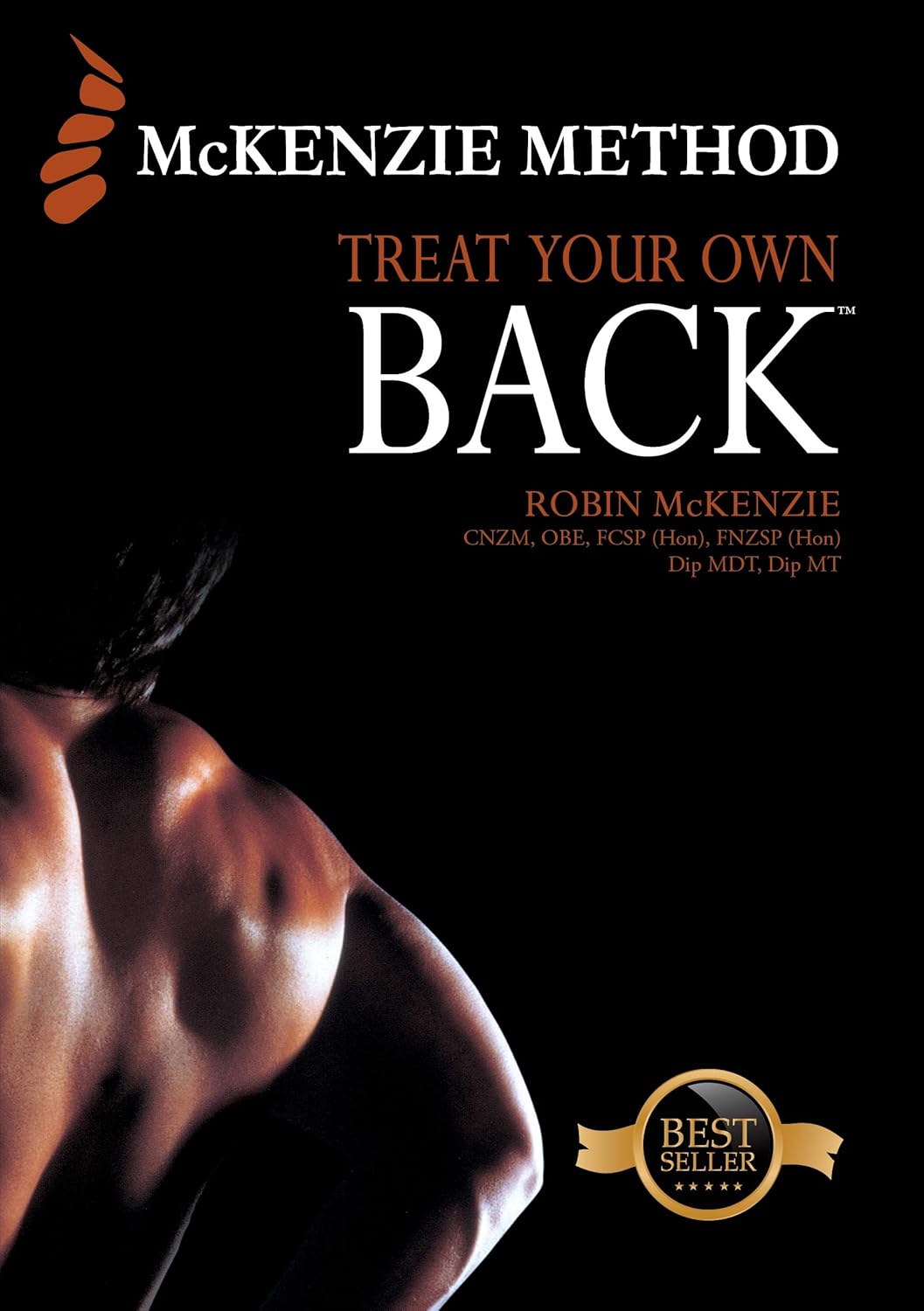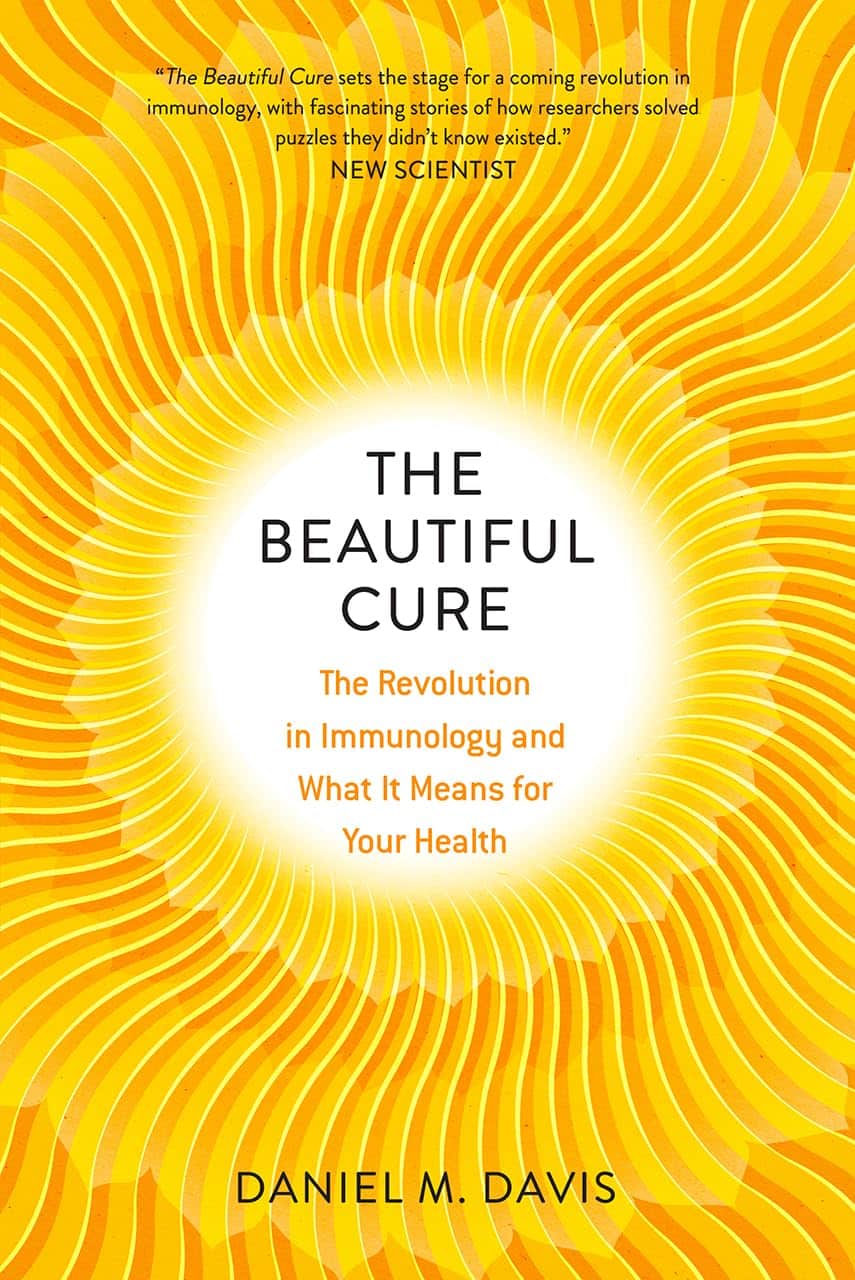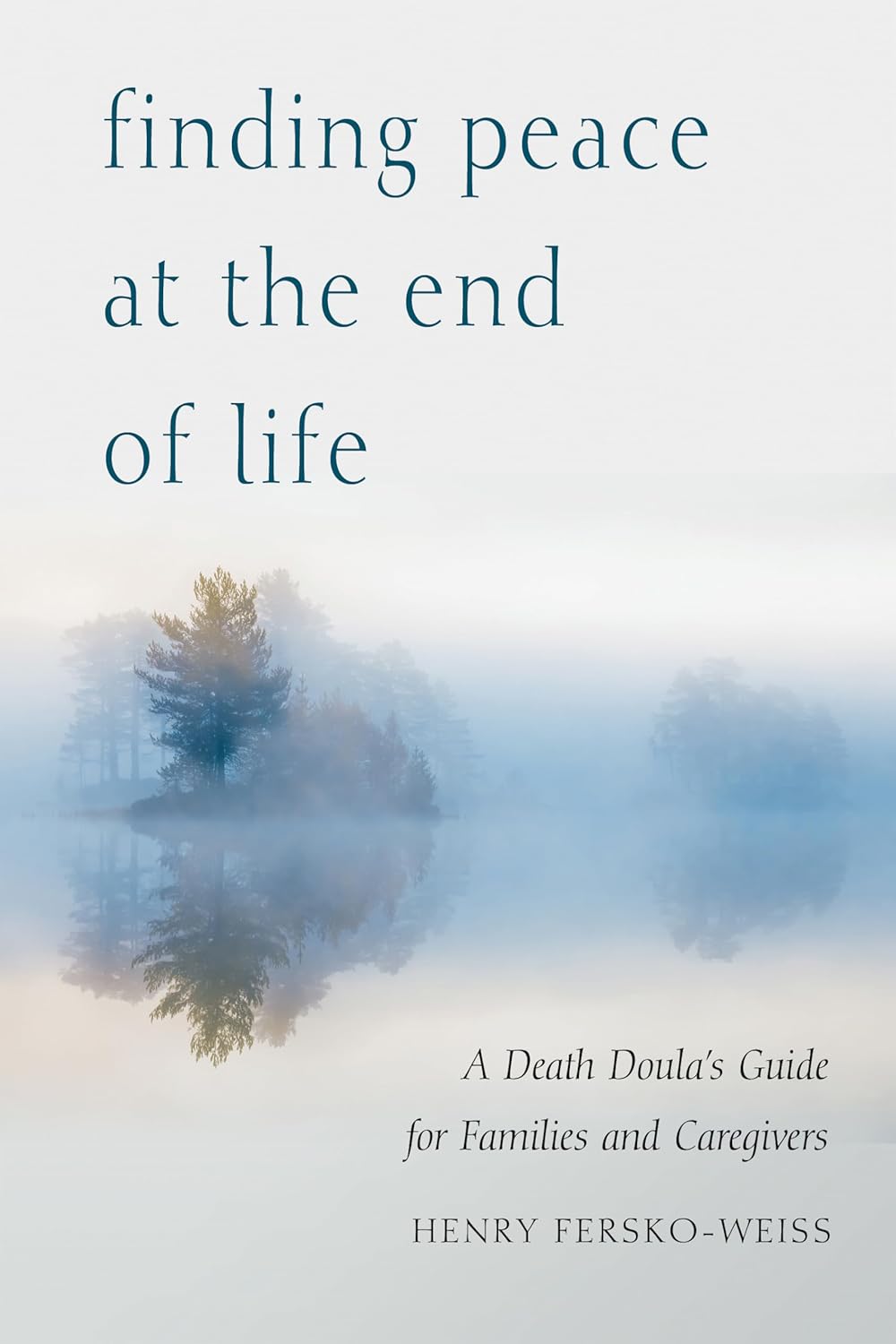
How Science News Outlets Can Lie To You (Yes, Even If They Cite Studies!)
10almonds is reader-supported. We may, at no cost to you, receive a portion of sales if you purchase a product through a link in this article.
Each Monday, we’re going to be bringing you cutting-edge research reviews to not only make your health and productivity crazy simple, but also, constantly up-to-date.
But today, in this special edition, we want to lay out plain and simple how to see through a lot of the tricks used not just by popular news outlets, but even sometimes the research publications themselves.
That way, when we give you health-related science news, you won’t have to take our word for it, because you’ll be able to see whether the studies we cite really support the claims we make.
Of course, we’ll always give you the best, most honest information we have… But the point is that you shouldn’t have to trust us! So, buckle in for today’s special edition, and never have to blindly believe sci-hub (or Snopes!) again.

The above now-famous Tumblr post that became a meme is a popular and obvious example of how statistics can be misleading, either by error or by deliberate spin.
But what sort of mistakes and misrepresentations are we most likely to find in real research?
Spin Bias
Perhaps most common in popular media reporting of science, the Spin Bias hinges on the fact that most people perceive numbers in a very “fuzzy logic” sort of way. Do you?
Try this:
- A million seconds is 11.5 days
- A billion seconds is not weeks, but 13.2 months!
…just kidding, it’s actually nearly thirty-two years.
Did the months figure seem reasonable to you, though? If so, this is the same kind of “human brains don’t do large numbers” problem that occurs when looking at statistics.
Let’s have a look at reporting on statistically unlikely side effects for vaccines, as an example:
- “966 people in the US died after receiving this vaccine!” (So many! So risky!)
- “Fewer than 3 people per million died after receiving this vaccine!” (Hmm, I wonder if it is worth it?)
- “Half of unvaccinated people with this disease die of it” (Oh)
How to check for this: ask yourself “is what’s being described as very common really very common?”. To keep with the spiders theme, there are many (usually outright made-up) stats thrown around on social media about how near the nearest spider is at any given time. Apply this kind of thinking to medical conditions.. If something affects only 1% of the population (So few! What a tiny number!), how far would you have to go to find someone with that condition? The end of your street, perhaps?
Selection/Sampling Bias
Diabetes disproportionately affects black people, but diabetes research disproportionately focuses on white people with diabetes. There are many possible reasons for this, the most obvious being systemic/institutional racism. For example, advertisements for clinical trial volunteer opportunities might appear more frequently amongst a convenient, nearby, mostly-white student body. The selection bias, therefore, made the study much less reliable.
Alternatively: a researcher is conducting a study on depression, and advertises for research subjects. He struggles to get a large enough sample size, because depressed people are less likely to respond, but eventually gets enough. Little does he know, even the most depressed of his subjects are relatively happy and healthy compared with the silent majority of depressed people who didn’t respond.

See This And Many More Educational Cartoons At Sketchplanations.com!
How to check for this: Does the “method” section of the scientific article describe how they took pains to make sure their sample was representative of the relevant population, and how did they decide what the relevant population was?
Publication Bias
Scientific publications will tend to prioritise statistical significance. Which seems great, right? We want statistically significant studies… don’t we?
We do, but: usually, in science, we consider something “statistically significant” when it hits the magical marker of p=0.05 (in other words, the probability of getting that result is 1/20, and the results are reliably coming back on the right side of that marker).
However, this can result in the clinic stopping testing once p=0.05 is reached, because they want to have their paper published. (“Yay, we’ve reached out magical marker and now our paper will be published”)
So, you can think of publication bias as the tendency for researchers to publish ‘positive’ results.
If it weren’t for publication bias, we would have a lot more studies that say “we tested this, and here are our results, which didn’t help answer our question at all”—which would be bad for the publication, but good for science, because data is data.
To put it in non-numerical terms: this is the same misrepresentation as the technically true phrase “when I misplace something, it’s always in the last place I look for it”—obviously it is, because that’s when you stop looking.
There’s not a good way to check for this, but be sure to check out sample sizes and see that they’re reassuringly large.
Reporting/Detection/Survivorship Bias
There’s a famous example of the rise in “popularity” of left-handedness. Whilst Americans born in ~1910 had a bit under a 3.5% chance of being left handed, those born in ~1950 had a bit under a 12% change.
Why did left-handedness become so much more prevalent all of a sudden, and then plateau at 12%?
Simple, that’s when schools stopped forcing left-handed children to use their right hands instead.
In a similar fashion, countries have generally found that homosexuality became a lot more common once decriminalized. Of course the real incidence almost certainly did not change—it just became more visible to research.
So, these biases are caused when the method of data collection and/or measurement leads to a systematic error in results.
How to check for this: you’ll need to think this through logically, on a case by case basis. Is there a reason that we might not be seeing or hearing from a certain demographic?
And perhaps most common of all…
Confounding Bias
This is the bias that relates to the well-known idea “correlation ≠ causation”.
Everyone has heard the funny examples, such as “ice cream sales cause shark attacks” (in reality, both are more likely to happen in similar places and times; when many people are at the beach, for instance).
How can any research paper possibly screw this one up?
Often they don’t and it’s a case of Spin Bias (see above), but examples that are not so obviously wrong “by common sense” often fly under the radar:
“Horse-riding found to be the sport that most extends longevity”
Should we all take up horse-riding to increase our lifespans? Probably not; the reality is that people who can afford horses can probably afford better than average healthcare, and lead easier, less stressful lives overall. The fact that people with horses typically have wealthier lifestyles than those without, is the confounding variable here.

See This And Many More Educational Cartoons on XKCD.com!
In short, when you look at the scientific research papers cited in the articles you read (you do look at the studies, yes?), watch out for these biases that found their way into the research, and you’ll be able to draw your own conclusions, with well-informed confidence, about what the study actually tells us.
Science shouldn’t be gatekept, and definitely shouldn’t be abused, so the more people who know about these things, the better!
So…would one of your friends benefit from this knowledge? Forward it to them!
Don’t Forget…
Did you arrive here from our newsletter? Don’t forget to return to the email to continue learning!
Recommended
Learn to Age Gracefully
Join the 98k+ American women taking control of their health & aging with our 100% free (and fun!) daily emails:
-
Lemon vs Lime – Which is Healthier?
10almonds is reader-supported. We may, at no cost to you, receive a portion of sales if you purchase a product through a link in this article.
Our Verdict
When comparing lemons to limes, we picked the lemons.
Why?
This one’s simple today. They’re both comparable fruits in most ways, and their macro profiles are almost identical. When it comes to vitamins, however, they stand apart a little.
Both are most well-known for their vitamin C content, but lemons contain about 2x the vitamin C of limes.
In other vitamins, they’re not too far apart. Technically limes have 2x the vitamin A, but this doesn’t count for much because it’s a case of “two times almost nothing is still almost nothing”.
In the category of minerals, neither fruit is a very good source of most minerals, and the minerals they do have, are mostly more or less the same.
Both are acidic, and this can have blood sugar benefits in both cases (and, if not careful, damage tooth enamel in both cases). Nothing to set either apart from the other here.
So, it comes down to the vitamin C! In which category, lemons take the prize with their higher content.
Want to learn more?
You might like to read:
10 Ways To Balance Blood Sugars ← where it talks about the use of vinegar here, it’s about the acidity, so lemon juice or lime juice is an option too!
Take care!
Share This Post
-
Treat Your Own Back – by Robin McKenzie
10almonds is reader-supported. We may, at no cost to you, receive a portion of sales if you purchase a product through a link in this article.
A quick note about the author first: he’s a physiotherapist and not a doctor, but with over 40 years of practice to his name and 33 letters after his name (CNZM OBE FCSP (Hon) FNZSP (Hon) Dip MDT Dip MT), he seems to know his stuff. And certainly, if you visit any physiotherapist, they will probably have some of his books on their own shelves.
This book is intended for the layperson, and as such, explains everything that you need to know, in order to diagnose and treat your back. To this end, he includes assorted tests to perform, a lot of details about various possible back conditions, and then exercises to fix it, i.e. fix whatever you have now learned that the problem is, in your case (if indeed you didn’t know for sure already).
Of course, not everything can be treated by exercises, and he does point to what other things may be necessary in those cases, but for the majority, a significant improvement (if not outright symptom-free status) can be enjoyed by applying the techniques described in this book.
Bottom line: for most people, this book gives you the tools required to do exactly what the title says.
Click here to check out Treat Your Own Back, and treat your own back!
PS: if your issue is not with your back, we recommend you check out his other books in the series (neck, shoulder, hip, knee, ankle) 😎
Share This Post
-
How influencers and content creators discuss birth control on social media: What research shows
10almonds is reader-supported. We may, at no cost to you, receive a portion of sales if you purchase a product through a link in this article.
News articles in recent weeks have documented the spread of misinformation about hormonal birth control methods on popular social media platforms like TikTok, YouTube and X, formerly called Twitter. Influencers with large and small followings are sharing unsubstantiated claims about the side effects of contraceptives, while directly or indirectly encouraging others to stop using them.
This trend has not escaped researchers, who for several years have been investigating what people who can get pregnant are posting on social media platforms about hormonal and non-hormonal birth control methods. Understanding the drivers of these trends is important because they have implications for policy and patient care, according to researchers. Some worry that during the post-Dobbs era, when there are continued strikes against reproductive rights in the U.S., misinformation about birth control on social media could have a negative influence on contraceptive preferences — potentially leading to more unwanted pregnancies.
More than 90% of women of reproductive age have used at least one contraceptive method, according to a 2023 report by the U.S. National Center for Health Statistics. However, the report also finds that the use of male condoms and withdrawal methods increased between 2006 and 2019, while the use of the birth control pill decreased. Non-hormonal contraception methods, including condoms, spermicides, withdrawal and menstrual cycle tracking, are 10% or less effective than hormonal contraceptives. The only exceptions are surgical sterilization and the copper intrauterine device.
To be sure, not all birth control-related content posted on social media platforms is negative, studies show. Health care professionals are sharing educational material with a high rate of engagement and non-health care professional users share their positive experiences with the birth control methods they use.
But as you will see in the studies curated below, researchers also find that social media users, including influencers, share inaccurate information about hormonal contraceptives on various social media platforms, discuss their discontinuation of birth control in favor of non-hormonal methods and engage in unsubstantiated fear-mongering of hormonal contraceptives.
Researchers also have learned that the content posted on social media platforms has changed in tone over time, mirroring the shift in the national political discourse.
In a 2021 study published in the American Journal of Obstetrics & Gynecology, researchers analyzed more than 800,000 English-language tweets mentioning at least one contraceptive method between March 2006, when Twitter was founded, and December 2019. They coded the sentiment of tweets as positive, neutral or negative.
“What we found over time was that the number of neutral tweets went down for each and every one of the birth control methods, and people became more polarized with regards to how they talk on these social media platforms over those 13 years,” says study co-author Dr. Deborah Bartz, an OB-GYN at Brigham and Women’s Hospital with expertise in complex family planning and an associate professor at Harvard Medical School.
In a February 2024 commentary in the Journal of Women’s Health, University of Delaware researchers Emily Pfender and Leah Fowler argue that ongoing dialogue about contraception on social media provides “a glimpse into public sentiment about available options” to people who can get pregnant.
The authors also note that misinformation and disinformation about hormonal contraception may have a larger effect on health disparities, especially among historically marginalized groups who may already mistrust the medical establishment.
“This may contribute to unintended pregnancy and delayed care, further widening health disparities and hindering progress toward equitable reproductive health outcomes,” Pfender and Fowler write.
Side effects
There are known side effects to hormonal birth control methods, including headaches, nausea, sore breasts and spotting. Most are mild and disappear with continued use or with switching to another method. Among hormonal contraceptives, only the Depo-Provera injection has been linked with weight gain, studies show.
But some social media influencers have spread false claims about the potential side effects of hormonal birth control methods, ranging from infertility to abortion to unattractiveness. Despite these false claims, physicians and professional organizations such as the American College of Obstetricians and Gynecologists find today’s contraceptive options safe and very effective.
“They’re about the most low-risk prescription that I give,” says Dr. Megana Dwarakanath, an adolescent medicine physician in Pittsburgh. “I always joke that if something goes wrong in someone’s life, they’re within the reproductive years, it always gets blamed on birth control.”
Dwarakanath says her young patients are most worried about two side effects: weight gain and mood. “Those are the things that they will almost always attribute to their birth control at a time that their bodies are also changing very rapidly,” she says. “Things like mental health diagnoses or personality disorders also tend to crop up during the time young people have started or have been on birth control.”
Most research on the link between oral contraceptives and cancer risk comes from observational studies, according to the National Cancer Institute. Overall, the studies have consistently shown that the risks of breast and cervical cancer are slightly increased for women who use oral contraceptives, whereas the risk of endometrial, ovarian and colorectal cancers are reduced.
The use of hormonal birth control has also been associated with an increase in the risk of developing blood clots, studies show. But that risk is not universal for everyone who takes hormonal birth control. This risk is higher for women 35 and older, those who smoke, are very overweight or have a history of cardiovascular disease. Overall, 3 to 9 out of 10,000 women who take the pill are at risk of developing blood clots within a given year. The risk for women who don’t take the pill is 1 to 5 out of 10,000.
There is no association between the pill and mood disorders, according to a large body of research, including a 2021 cohort study of nearly 740,000 young women.
It’s worth noting the dearth of research into women’s reproductive health due to chronic underfunding of women’s health research. An analysis of funding by the U.S. National Institutes of Health finds that in nearly three-quarters of the cases where a disease affects mainly one gender, the institute’s funding pattern favored males. Either the disease affected more women and was underfunded, or the disease affected more men and was overfunded, according to the 2021 study published in the Journal of Women’s Health.
Aside from underfunding, conducting robust research into the long-term effects of birth control is complex.
“Historically, people haven’t felt that it’s ethically OK to randomize people to birth control methods in large part because the outcome of unintended pregnancy is greater,” for people who are given the placebo, Bartz says.
Research on birth control misinformation on social media
Social media use is widespread among young adults. More than 90% of Americans between 18 and 29 reported ever using YouTube, while 78% said they had used Instagram, 62% used TikTok and 42% used Twitter, according to a 2023 survey of 5,733 U.S. adults by Pew Research Center.
These years overlap with the demographic of people who are most likely to use birth control. And because the use of contraceptives is less stigmatized today, people are more likely to talk with one another about their questions and concerns or share that information online.
In addition to investigating the general landscape of social media posts about birth control, researchers are also interested in the type of content influencers, who typically have 20,000 or more followers, post, because of their persuasive power over their audiences.
“When influencers disclose personal experiences and beliefs about various topics, audience members tend to form similar attitudes especially when they feel connected to the influencer,” Pfender and M. Marie Devlin write in a 2023 study published in the journal Health Communication.
Below we have curated several studies published in recent years documenting the spread of birth control misinformation on social media. The roundup is followed by a quick reference guide on female contraceptives and their actual potential side effects.
Contraceptive Content Shared on Social Media: An Analysis of Twitter
Melody Huang, et al. Contraception and Reproductive Medicine, February 2024.The study: The authors explore how contraceptive information is shared on X and understand how those posts affect women’s decisions. They analyze a random 1% of publicly available English-language tweets about reversible prescription contraceptive methods, from January 2014 and December 2019. The 4,434 analyzed tweets included at least 200 tweets per birth control method — IUDs, implants, the pill, patch and ring.
The findings: 26.7% of tweets about contraceptive methods discussed decision-making and 20.5% discussed side effects, especially the side effects of IUDs and the depot medroxyprogesterone acetate (DMPA or Depo-Provera) shot. Discussions about the pill, patch or ring prompted more discussions on logistics and adherence. About 6% of tweets explicitly requested information. Tweets about IUDs were most popular in terms of likes.
More importantly, 50.6% of the tweets were posted by contraceptive users, while only 6% came from official health or news sources. Tweets from news or journalistic sources were more frequent than tweets from a health care professional or organization.
Some tweets contained misinformation represented as facts, such as the unsubstantiated claim that IUDs can cause fertility issues. Others were outwardly misogynistic, shaming women and claiming that they wouldn’t be able to have kids because of using hormonal birth control.
One takeaway: “While Twitter may provide valuable insight, with more tweets being created by personal contraceptive users than official healthcare sources, the available information may vary in reliability. Asking patients about information from social media can help reaffirm to patients the importance of social networks in contraceptive decision-making while also addressing misconceptions to improve contraceptive counseling,” the authors write.
What Do Social Media Influencers Say About Birth Control? A Content Analysis of YouTube Vlogs About Birth Control
Emily J. Pfender and M. Marie Devlin. Health Communication, January 2023.The study: To explore what social media influencers shared on YouTube about their experiences with hormonal and non-hormonal methods of birth control, the researchers analyzed 50 vlogs posted between December 2019 and December 2021. Most of the 50 influencers were categorized on YouTube as Lifestyle (72%) and Fitness (16%). They had between 20,000 and 2.2 million subscribers each.
The findings: In total, 74% of the influencers talked about discontinuing hormonal birth control. About 44% said the main reason they were discontinuing birth control was to be more natural, while 32% said they wanted to improve their mental health and 20% were concerned about weight gain.
Forty percent of influencers mentioned using non-hormonal birth control methods such as menstrual cycle tracking, condoms, non-hormonal IUDs and the pull-out method. Twenty percent reported switching from hormonal to non-hormonal methods.
One takeaway: “Our content analysis revealed that discontinuation of hormonal birth control is commonly discussed among [social media influencers] on YouTube and sexual health information from influencers might not provide accurate educational information and tools… this is especially concerning given that social media is young adults’ primary tool for sexual health information. Future research is needed to understand the effects of SMI birth control content on sexual health behaviors,” the authors write.
Hormonal Contraceptive Side Effects and Nonhormonal Alternatives on TikTok: A Content Analysis
Emily J. Pfender, Kate Tsiandoulas, Stephanie R. Morain and Leah R. Fowler. Health Promotion Practice, January 2024.The study: The authors analyzed the content of 100 TikTok videos that used the hashtags #birthcontrolsideeffects and #nonhormonalcontraception. Their goal was to understand the types of content about side effects of hormonal and non-hormonal contraceptives on TikTok.
The findings: The videos averaged about 1 minute and garnered an average of 27,795 likes, 251 comments and 623 shares. For #birthcontrolsideeffects, 80% of the audience was 18 to 24 years old and videos with that hashtag had 43 million views worldwide as of July 7, 2023.
Thirty-two percent of the videos were by regular users (non-influencers), 26 by clinicians, 13% by health coaches and 2% by companies. Only 3% had a sponsorship disclosure and 6% included a medical disclaimer, that the person was not a doctor or was not providing medical advice.
Most of the 100 videos (71%) mentioned hormonal contraception. Among them 51% discussed unspecific hormonal contraceptives, 31% talked about the pill and 11% about hormonal IUDs. Four of the 71 creators explicitly recommended against using hormonal contraceptives.
Claims about hormonal contraceptives were mostly based on personal experience. About 25% of the creators cited no basis for their claims, 23% included outside evidence, including unspecified studies or information from the FDA insert, and 11% used a combination of personal and outside evidence.
Almost half (49%) mentioned discontinuing their hormonal contraception, with negative side effects cited as the most common reason.
The creators talked about mental health issues, weight gain, headaches, and less common risks of various cancers or chronic illness, change in personality and blood clots. They were less likely to mention the positive aspects of birth control.
About 52% of videos mentioned non-hormonal contraception, including copper IUDs and cycle tracking.
Nine of the 100 creators expressed feeling dismissed, pressured, gaslit or insufficiently informed about contraception by medical providers.
One takeaway: “Our findings support earlier work suggesting social media may fuel ‘hormonophobia,’ or negative framing and scaremongering about hormonal contraception and that this phobia is largely driven by claims of personal experience rather than scientific evidence,” the authors write. “Within these hashtag categories, TikTok creators frame their provider interactions negatively. Many indicate feeling ignored or upset after medical appointments, not sufficiently informed about contraceptive options, and pressured to use hormonal contraceptives. This finding aligns with previous social media research and among the general population, suggesting opportunities for improvements in contraceptive counseling.”
Popular Contraception Videos on TikTok: An Assessment of Content Topics
Rachel E. Stoddard, et al. Contraception, January 2024.The study: Researchers analyzed 700 English-language TikTok videos related to hormonal contraception, with a total of 1.2 billion views and 1.5 million comments, posted between October 2019 and December 2021. Their aim was to explore the types of contraception content on TikTok and to understand how the platform influences the information patients take into birth control counseling visits.
The findings: More than half of the videos (52%) were about patient experiences and how to use contraceptives. Other common topics included side effects (35%) and pregnancy (39%).
Only 19% of the videos were created by health care professionals, including midwives, physician assistants and medical doctors, although those videos garnered 41% of the total views, indicating higher engagement. While 93% of health care providers shared educational content, 23% of non-health care providers shared educational content.
One takeaway: “Our findings show an exceptional opportunity for education around contraception for young reproductive-aged individuals, given the accessibility and popularity of these videos. This may also extend to other topics around sex education and family planning, including sexually transmitted infection prevention and treatment and procuring abortion care,” the authors write.
TikTok, #IUD, and User Experience With Intrauterine Devices Reported on Social Media
Jenny Wu, Esmé Trahair, Megan Happ and Jonas Swartz. Obstetrics & Gynecology, January 2023.The study: Researchers used a web-scraping application to collect the top 100 TikTok videos tagged #IUD on April 6, 2022, based on views, comments, likes and shares. Their aim was to understand the perspectives and experiences of people with IUDs shared on TikTok. The videos had a total of 471 million views, 32 million likes and 1 million shares. Their average length was 33 seconds.
The findings: Some 89% of the creators identified as female and nearly 90% were from the United States; 37% were health care professionals; and 78% were 21 years or older.
Video types included patients’ own experiences with IUD removal (32%), educational (30%) and humorous (25%). More videos (38%) had a negative tone compared with 19% with a positive tone. The videos that portrayed negative user experiences emphasized pain and distrust of health care professionals.
Half of the videos were very accurate, while nearly a quarter were inaccurate (the authors did not use the term misinformation).
One takeaway: “The most liked #IUD videos on TikTok portray negative experiences related to pain and informed consent. Awareness of this content can help health care professionals shape education given the high prevalence of TikTok use among patients,” the authors write. “TikTok differs from other platforms because users primarily engage with an algorithmically curated feed individualized to the user’s interests and demographics.”
Types of female birth control
Most female hormonal contraceptives contain the synthetic version of natural female hormones estrogen and progesterone. They affect women’s hormone levels, preventing mature eggs from being released by the ovaries, a process that’s known as ovulation, hence, preventing a possible pregnancy.
Of the two hormones, progesterone (called progestin in synthetic form) is primarily responsible for preventing pregnancy. In addition to playing a role in preventing ovulation, progesterone inhibits sperm from penetrating through the cervix. Estrogen inhibits the development of follicles in the ovaries.
The information below is sourced from the CDC, the National Library of Medicine, the Cleveland Clinic and the Mayo Clinic.
Intrauterine contraception
Also called Long-Acting Reversible Contraception, or LARC, this method works by thickening the cervical mucus so the sperm can’t reach an egg. There are two types of IUDs: hormonal and non-hormonal.
- Levonorgestrel intrauterine system is a T-shaped device that’s placed inside the uterus by a doctor. It releases a small amount of progestin daily to prevent pregnancy. It can stay in place for 3 to 8 years. Its failure rate is 0.1% to 0.4%.
- Copper T intrauterine device is also T-shaped and is placed inside the uterus by a doctor. It does not contain hormones and can stay in place for up to 10 years. Its failure rate is 0.8%.
- Side effects: Copper IUDs may cause more painful and heavy periods, while progestin IUDs may cause irregular bleeding. In the very rare cases of pregnancy while having an IUD, there’s a greater chance of an ectopic pregnancy, which is when a fertilized egg grows outside of the uterus.
Hormonal methods
- The implant is a single, thin rod that’s inserted under the skin of the upper arm. It releases progestin over 3 years. Its failure rate is 0.1%, making it the most effective form of contraception available.
- Side effects: The most common side effect of an implant is irregular bleeding.
- The injection Depo-Provera or “shot” or “Depo” delivers progestin in the buttocks or arms every three months at the doctor’s office. Its failure rate is 4%.
- Side effects: The shot may cause irregular bleeding. The shot is also the only contraceptive that may cause weight gain. It may also be more difficult to predict when fertility returns once the shot is stopped.
- Combined oral contraceptives or “the pill” contain estrogen and progestin. They’re prescribed by a doctor. The pill has to be taken at the same time daily. The pill is not recommended for people who are older than 35 and smoke, have a history of blood clots or breast cancer. Its failure rate is 7%. Among women aged 15 to 44 who use contraception, about 25% use the pill.
- The skin patch is worn on the lower abdomen, buttocks or upper body, releasing progestin and estrogen. It is prescribed by a doctor. A new patch is used once a week for three weeks. No patch is worn for the fourth week. Its failure rate is 7%.
- Hormonal vaginal contraceptive ring releases progestin and estrogen. It’s placed inside the vagina. It is worn for three weeks and taken out on the fourth week. Its typical failure rate is 7%.
- Side effects: Contraceptives with estrogen, including the pill, the patch and the ring, increase the risk of developing blood clots.
- Progestin-only pill or “mini-pill” only has progestin and is prescribed by a doctor. It has to be taken daily at the same time. It may be a good option for women who can’t take estrogen. Its typical failure rate is 7%.
- Opill is the first over-the-counter daily oral contraceptive in the U.S., approved by the Food and Drug Administration in 2023. Opill only has progestin and like other birth control pills, it has to be taken at the same time every day. It should not be used by those who have or have had breast cancer. Its failure rate is 7%.
- Side effects: The most common side effect of progestin-only pills is irregular bleeding, although the bleeding tends to be light.
Non-hormonal birth control methods include using barriers such as a diaphragm or sponge, condoms and spermicides, withdrawal, and menstrual cycle tracking. Emergency contraception, including emergency contraception pills (the morning-after pill), is not a regular method of birth control.
Additional research studies to consider
Population Attitudes Toward Contraceptive Methods Over Time on a Social Media Platform
Allison A. Merz, et al. American Journal of Obstetrics & Gynecology, December 2020.Social Media and the Intrauterine Device: A YouTube Content Analysis
Brian T. Nguyen and Allison J. Allen. BMJ Sexual and Reproductive Health, November 2017.This article first appeared on The Journalist’s Resource and is republished here under a Creative Commons license.
Share This Post
Related Posts
-
Pregnant women can now get a free RSV shot. What other vaccines do you need when you’re expecting?
10almonds is reader-supported. We may, at no cost to you, receive a portion of sales if you purchase a product through a link in this article.
From today, February 3, pregnant women in Australia will be eligible for a free RSV vaccine under the National Immunisation Program.
This vaccine is designed to protect young infants from severe RSV (respiratory syncytial virus). It does so by generating the production of antibodies against RSV in the mother, which then travel across the placenta to the baby.
While the RSV vaccine is a new addition to the National Immunisation Program, it’s one of three vaccines provided free for pregnant women under the program, alongside ones for influenza and whooping cough. Each offers important protection for newborn babies.
voronaman/Shutterstock The RSV vaccine
RSV is the most common cause of lower respiratory infections (bronchiolitis and pneumonia) in infants. It’s estimated that of every 100 infants born in Australia each year, at least two will be hospitalised with RSV by six months of age.
RSV infection is most common roughly between March and August in the southern hemisphere, but infection can occur year-round, especially in tropical areas.
The vaccine works by conferring passive immunity (from the mother) as opposed to active immunity (the baby’s own immune response). By the time the baby is born, their antibodies are sufficient to protect them during the first months of life when they are most vulnerable to severe RSV disease.
The RSV vaccine registered for use in pregnant women in Australia, Abrysvo, has been used since 2023 in the Americas and Europe. Real-world experience there shows it’s working well.
For example, over the 2024 RSV season in Argentina, it was found to prevent 72.7% of lower respiratory tract infections caused by RSV and requiring hospitalisation in infants aged 0–3 months, and 68% among those aged 0–6 months. This research noted three deaths from RSV, all in infants whose mothers did not receive the RSV vaccine during pregnancy.
This was similar to protection seen in a large multinational clinical trial that compared babies born to mothers who received this RSV vaccine with babies born to mothers who received a placebo. This study found the vaccine prevented 82.4% of severe cases of RSV in infants aged under three months, and 70% under six months, and that the vaccine was safe.
Vaccinating mothers during pregnancy protects the newborn baby. StoryTime Studio/Shutterstock In addition to the maternal vaccine, nirsevimab, a long-acting monoclonal antibody, provides effective protection against severe RSV disease. It’s delivered to the baby by an intramuscular injection, usually in the thigh.
Nirsevimab is recommended for babies born to women who did not receive an RSV vaccine during pregnancy, or who are born within two weeks of their mother having received the shot (most likely if they’re born prematurely). It may also be recommended for babies who are at higher risk of RSV due to a medical condition, even if their mother was vaccinated.
Nirsevimab is not funded under the National Immunisation Program, but is covered under various state and territory-based programs for infants of mothers who fall into the above categories.
But now we have a safe and effective RSV vaccine for pregnancy, all pregnant women should be encouraged to receive it as the first line of prevention. This will maximise the number of babies protected during their first months of life.
Flu and whooping cough
It’s also important pregnant women continue to receive flu and whooping cough vaccines in 2025. Like the RSV vaccine, these protect infants by passing antibodies from mother to baby.
There has been a large whooping cough outbreak in Australia in recent months, including a death of a two-month-old infant in Queensland in November 2024.
The whooping cough vaccine, given in combination with diphtheria and tetanus, prevents more than 90% of whooping cough cases in babies too young to receive their first whooping cough vaccine dose.
Similarly, influenza can be deadly in young babies, and maternal flu vaccination substantially reduces hospital visits associated with influenza for babies under six months. Flu can also be serious for pregnant women, so the vaccine offers important protection for the mother as well.
COVID vaccines are safe in pregnancy, but unless a woman is otherwise eligible, they’re not routinely recommended. You can discuss this with your health-care provider.
When and where can you get vaccinated?
Pregnant women can receive these vaccines during antenatal visits through their GP or in a specialised antenatal clinic.
The flu vaccine is recommended at any time during pregnancy, the whooping cough vaccine from 20 weeks (ideally before 32 weeks), and the RSV vaccine from 28 weeks (before 36 weeks).
It’s safe to receive multiple vaccinations at the same clinic visit.
The RSV vaccine is now available for pregnant women under the National Immunisation Program. Olga Rolenko/Shutterstock We know vaccination rates have declined in a variety of groups since the pandemic, and there’s evidence emerging that suggests this trend has occurred in pregnant women too.
A recent preprint (a study yet to be peer-reviewed) found a decrease of nearly ten percentage points in flu vaccine coverage among pregnant women in New South Wales, from 58.8% in 2020 to 49.1% in 2022. The research showed a smaller drop of 1.4 percentage points for whooping cough, from 79% in 2020 to 77.6% in 2022.
It’s important to work to improve vaccination rates during pregnancy to give babies the best protection in their first months of life.
We know pregnant women would like to receive information about new and routine maternal vaccines early in pregnancy. In particular, many pregnant women want to understand how vaccines are tested for safety, and their effectiveness, which was evident during COVID.
GPs and midwives are trusted sources of information on vaccines in pregnancy. There’s also information available online on Sharing Knowledge About Immunisation, a collaboration led by the National Centre for Immunisation Research and Surveillance.
Archana Koirala, Paediatrician and Infectious Diseases Specialist, University of Sydney; Bianca Middleton, Senior Research Fellow, Menzies School of Health Research; Margie Danchin, Professor of Paediatrics and vaccinologist, Royal Childrens Hospital, University of Melbourne and Murdoch Childrens Research Institute (MCRI); Associate Dean International, University of Melbourne, Murdoch Children’s Research Institute; Peter McIntyre, Professor in Women’s and Children’s Health, University of Otago, and Rebecca Doyle, Adjunct Research Fellow, School of Nursing, Midwifery and Social Work, The University of Queensland
This article is republished from The Conversation under a Creative Commons license. Read the original article.
Don’t Forget…
Did you arrive here from our newsletter? Don’t forget to return to the email to continue learning!
Learn to Age Gracefully
Join the 98k+ American women taking control of their health & aging with our 100% free (and fun!) daily emails:
-
The Beautiful Cure – by Dr. Daniel Davis
10almonds is reader-supported. We may, at no cost to you, receive a portion of sales if you purchase a product through a link in this article.
This one is not just a book about the history of immunology and a primer on how the immune system works. It is those things too, but it’s more:
Dr. Daniel Davis, a professor of immunology and celebrated researcher in his own right, bids us look at not just what we can do, but also what else we might.
This is not to say that the book is speculative; Dr. Davis deals in data rather than imaginings. He also cautions us against falling prey to sensationalization of the “beautiful cures” that the field of immunology is working towards. What, then, are these “beautiful cures”?
Just like our immune systems (in the plural; by Dr. Davis’ count, primarily talking about our innate and adaptive immune systems) can in principle deal with any biological threat, but in practice don’t always get it right, the same goes for our medicine.
He argues that in principle, we categorically can cure any immune-related disease (including autoimmune diseases, and tangentially, cancer). The theoretical existence of such cures is a mathematically known truth. The practical, contingent existence of them? That’s what takes the actual work.
The style of the book is accessible pop science, with a hard science backbone from start to finish.
Bottom line: if you’d like to know more about immunology, and be inspired with hope and wonder without getting carried away, this is the book for you.
Click here to check out The Beautiful Cure, and learn about these medical marvels!
Don’t Forget…
Did you arrive here from our newsletter? Don’t forget to return to the email to continue learning!
Learn to Age Gracefully
Join the 98k+ American women taking control of their health & aging with our 100% free (and fun!) daily emails:
-
Finding Peace at the End of Life – by Henry Fersko-Weiss
10almonds is reader-supported. We may, at no cost to you, receive a portion of sales if you purchase a product through a link in this article.
This is not the most cheery book we’ve reviewed, but it is an important one. From its first chapter, with “a tale of two deaths”, one that went as well as can be reasonably expected, and the other one not so much, it presents a lot of choices.
The book is not prescriptive in its advice regarding how to deal with these choices, but rather, investigative. It’s thought-provoking, and asks questions—tacitly and overtly.
While the subtitle says “for families and caregivers”, it’s as much worth when it comes to managing one’s own mortality, too, by the way.
As for the scope of the book, it covers everything from terminal diagnosis, through the last part of life, to the death itself, to all that goes on shortly afterwards.
Stylewise, it’s… We’d call it “easy-reading” for style, but obviously the content is very heavy, so you might want to read it a bit at a time anyway, depending on how sensitive to such topics you are.
Bottom line: this book is not exactly a fun read, but it’s a very worthwhile one, and a good way to avoid regrets later.
Don’t Forget…
Did you arrive here from our newsletter? Don’t forget to return to the email to continue learning!
Learn to Age Gracefully
Join the 98k+ American women taking control of their health & aging with our 100% free (and fun!) daily emails:










